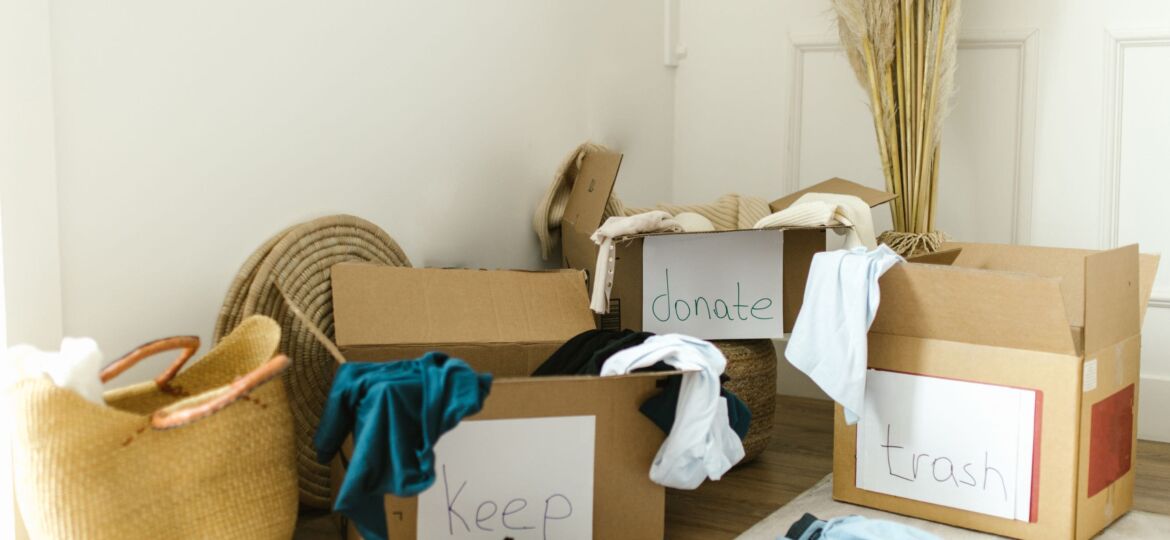
Decluttering is more than just a cleaning task; it’s a transformative process that can enhance mental clarity, productivity, and even emotional well-being. Many people struggle with clutter because they don’t know where to start, feel emotionally attached to their belongings, or simply get overwhelmed by the process. If you’ve ever felt stuck in a cycle of clutter, this guide is for you.
Why Do We Clutter?
Before diving into the decluttering process, it’s essential to understand why clutter accumulates in the first place. Some common reasons include:
- Sentimental attachment: Keeping items because they remind us of people, places, or events.
- Aspirational clutter: Holding onto things for a future version of yourself (e.g., fitness equipment you never use).
- Fear of waste: Feeling guilty about getting rid of items you spent money on.
- Overconsumption: Buying more than you need due to sales, trends, or impulse shopping.
- Lack of organization: Not having a system to keep things in place.
Questions to Ask Yourself When Decluttering
When sorting through your belongings, use these guiding questions to make decisions:
- Do I use this regularly?
- Does this item bring me joy or serve a purpose?
- Would I buy this again if I saw it in a store today?
- Is this item adding value to my life or taking up unnecessary space?
- Am I keeping this out of guilt or obligation?
- Is this something I can borrow or replace easily if needed in the future?
Where to Start Decluttering
One of the biggest mistakes people make when decluttering is trying to tackle everything at once. Instead, follow a structured approach:
1. Start Small
Begin with a single drawer, shelf, or a small section of a room. This will help you build momentum without feeling overwhelmed.
2. Choose a Category-Based Approach
Instead of decluttering room by room, try decluttering by category, as suggested by Marie Kondo in The Life-Changing Magic of Tidying Up. Common categories include:
- Clothes
- Books
- Papers
- Miscellaneous items (kitchenware, gadgets, decorations)
- Sentimental items (photos, heirlooms, gifts)
3. Use the Four-Box Method
For each item, decide its fate by placing it into one of four boxes:
- Keep: Things you need and use regularly.
- Donate/Sell: Items in good condition that someone else could use.
- Trash: Broken, expired, or unusable items.
- Undecided: A limited number of items you’re unsure about—revisit them after 30 days.
Tips for Effective Decluttering
- Follow the 80/20 Rule: We typically use only 20% of our belongings 80% of the time. Identify that 20% and prioritize keeping those items.
- Apply the One-Year Rule: If you haven’t used an item in the past year, you likely won’t use it in the future.
- Digitize Paper Clutter: Scan important documents and store them digitally to reduce paper buildup.
- Establish Daily Habits: Spend 10-15 minutes each day tidying up to prevent future clutter.
- Declutter Before Organizing: Avoid organizing clutter; instead, reduce what you own first.
- Use Storage Wisely: Invest in clear bins, drawer dividers, and labeled containers to keep things tidy.
The Emotional Side of Decluttering
Decluttering isn’t just a physical task—it can be an emotional journey. Here’s how to handle the feelings that may arise:
- Let go of guilt: It’s okay to part with gifts or expensive items you never use.
- Preserve memories in other ways: Take photos of sentimental items before letting them go.
- Seek support: If decluttering feels overwhelming, ask a friend or hire a professional organizer.
Maintaining a Clutter-Free Space
Decluttering isn’t a one-time event; it’s an ongoing practice. To maintain a tidy space:
- Adopt a “one in, one out” rule: For every new item you bring in, remove an old one.
- Have a designated place for everything: Ensure each item has a home to avoid clutter accumulation.
- Regularly reassess your belongings: Set aside time each month to reevaluate what you own.
Recommended Books on Decluttering
- The Life-Changing Magic of Tidying Up by Marie Kondo
- Goodbye, Things: The New Japanese Minimalism by Fumio Sasaki
- Decluttering at the Speed of Life by Dana K. White
- The Joy of Less by Francine Jay
- Minimalism: Live a Meaningful Life by Joshua Fields Millburn & Ryan Nicodemus
Final Thoughts
Decluttering is not about perfection—it’s about creating a space that supports your lifestyle and well-being. By decluttering with intention, you free up not only your physical space but also your mental energy. Start small, be consistent, and enjoy the benefits of a more organized and peaceful life.
______________
Affiliate Disclosure: This post contains affiliate links. If you click on a link and make a purchase, I may earn a small commission at no extra cost to you. As an Amazon Associate, I earn from qualifying purchases. Thank you for your support!



